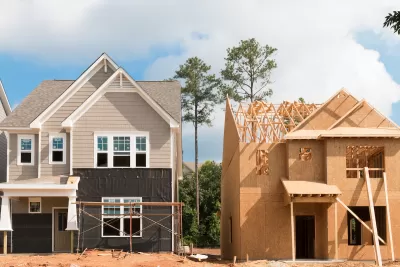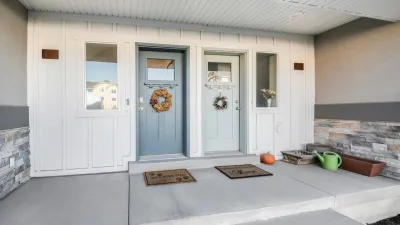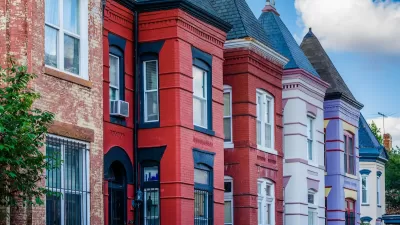Changes in the size and type of housing can accommodate different living arrangements and offer opportunities for multigenerational living and aging in place.

Writing in Strong Towns, Emma Durand-Wood makes the argument that changes in neighborhood scale aren’t always the tragedy that some community activists say they are.
Durand-Wood points to her childhood neighborhood as an example, where houses slowly began growing in size until the larger size became the norm. Now, more property owners and developers are building larger houses designed for multigenerational living, co-living, or renting out extra spaces to tenants.
For Durand-Wood, the change is a response to shifting needs. “In Canada, multigenerational households have increased in number by 50% since 2001. In the United States, the share of the U.S. population in multigenerational homes has more than doubled, from 7% in 1971 to 18% in 2021.”
Durand-Wood calls on planners and local governments to encourage the construction of multigenerational housing as well as multifamily buildings in new and existing neighborhoods, writing, “Neighborhoods must be permitted to evolve and change” to meet the changing needs of an aging population.
FULL STORY: The Monster House: Why a Change in Neighborhood Scale Isn’t a Bad Thing

Planetizen Federal Action Tracker
A weekly monitor of how Trump’s orders and actions are impacting planners and planning in America.

Congressman Proposes Bill to Rename DC Metro “Trump Train”
The Make Autorail Great Again Act would withhold federal funding to the system until the Washington Metropolitan Area Transit Authority (WMATA), rebrands as the Washington Metropolitan Authority for Greater Access (WMAGA).

The Simple Legislative Tool Transforming Vacant Downtowns
In California, Michigan and Georgia, an easy win is bringing dollars — and delight — back to city centers.

The States Losing Rural Delivery Rooms at an Alarming Pace
In some states, as few as 9% of rural hospitals still deliver babies. As a result, rising pre-term births, no adequate pre-term care and harrowing close calls are a growing reality.

The Small South Asian Republic Going all in on EVs
Thanks to one simple policy change less than five years ago, 65% of new cars in this Himalayan country are now electric.

DC Backpedals on Bike Lane Protection, Swaps Barriers for Paint
Citing aesthetic concerns, the city is removing the concrete barriers and flexposts that once separated Arizona Avenue cyclists from motor vehicles.
Urban Design for Planners 1: Software Tools
This six-course series explores essential urban design concepts using open source software and equips planners with the tools they need to participate fully in the urban design process.
Planning for Universal Design
Learn the tools for implementing Universal Design in planning regulations.
Smith Gee Studio
City of Charlotte
City of Camden Redevelopment Agency
City of Astoria
Transportation Research & Education Center (TREC) at Portland State University
US High Speed Rail Association
City of Camden Redevelopment Agency
Municipality of Princeton (NJ)





























